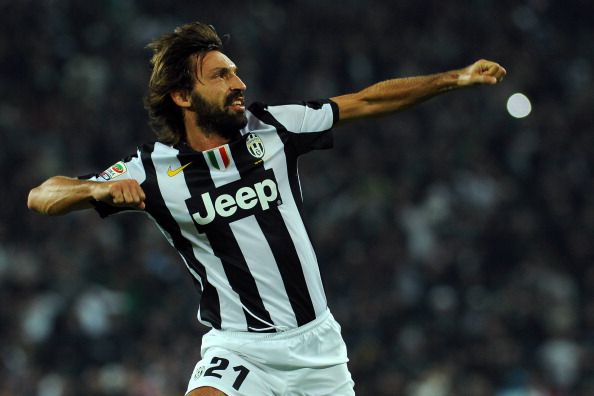
Why Juventus need to replace Andrea Pirlo

Andrea Pirlo
Last night’s 1-1 draw between Inter Milan and Juventus at the San Siro was effectively a victory for Inter, who were the underdogs coming into this contest. They had finished 33 points behind Juve in the league last season and while the champions spent the summer cherry-picking talent from across Europe, a floundering Inter struggled to attract quality players.
But while the draw does Walter Mazzarri and his troops credit, their most significant result in months was abetted by a poor performance from Juventus’ central cog, Andrea Pirlo.
When Juventus play a high defensive line, as they did yesterday, Pirlo usually stays at the rear to obtain a clear vision of the field, so that he can dictate play with his long balls. This means that if Pirlo is robbed of the ball, all you have to do is punt the ball to a speedy midfielder waiting up the field to counter-attack.
In the first half, Pirlo was twice muscled off the ball, first by Ricky Alvarez, then by Rodrigo Palacio, who then launched a counter-attack that came dangerously close to fruition. His classic long balls were rendered impotent, with striker Mirko Vucinic a passenger for much of the game.
Far from being his usual influential self, Pirlo looked at sixes and sevens against Inter’s aggressive defending. In the 87th minute he came off – to no one’s dismay – to be replaced by Simone Padoin.
This isn’t a one-off case. It has long been argued, in many a newspaper, that the Bianconeri cannot win European trophies while their system relies on Pirlo. Most major sides can close him down by playing an aggressive attacking midfielder goalside of Pirlo when he has the ball.
Chelsea’s Oscar did it on his Champions League debut last year, and Spain packed the field with playmakers in the Euro final last year, successfully swamping Pirlo into oblivion. Back in 2005, Rafael Benitez did the same, playing Steven Gerrard and Luis Garcia around Pirlo in the Champions League final.
Pirlo’s game depends heavily on sideways movement. For all his talent, he was never a very mobile player. At the peak of his career at AC Milan, Pirlo operated at the base of a midfield 3 featuring Gennaro Gattuso and Clarence Seedorf. Today, those roles are roughly reprised by Arturo Vidal and Claudio Marchisio, but the pressure on Pirlo to create is arguably greater in a team that lacks a forward line of the calibre of Shevchenko-Crespo-Kaka circa 2005.
And with age, Pirlo’s mobility has decreased further: a decline accentuated by the fact that he has played out his entire career in Serie A, which is a slow division compared to the other Big 5 leagues. Additionally, while Pirlo is a player of supreme class, over-reliance on one man results in a tactical cauldron waiting to boil over.
Last season, Barcelona were criticized for making Messi the focal point of all their attacks; whereas Bayern Munich won a Treble partly because of the monstrous array of Panzers in their midfield, each and every one of whom is a consistent match-winner.
That said, replacing him is easier said than done. Pirlo has for a decade been one of the foremost deep-lying playmakers in Europe, and is an accomplished dead-ball specialist. There’s no denying that he has been instrumental in bringing Juventus back to the top.
However, at 34 he is clearly in the autumn of his career. Perhaps Juventus manager Antonio Conte would be well-advised to start looking – not a moment too soon – for an understudy who can eventually don l’architetto’s weighty mantle. With Juventus relatively well-placed at the moment, a transition can be effected smoothly.